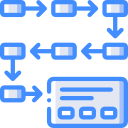Why Automated Payroll Compliance Matters Now
Remote hiring, hybrid schedules, and multi-state footprints mean tax nexus can arise overnight. Automated Payroll Compliance Management centralizes rules, updates them in real time, and prevents last-minute scrambles when jurisdictions revise thresholds or add surprise forms.
Why Automated Payroll Compliance Matters Now
Manual spreadsheets breed copy‑paste mistakes, late filings, and rework that steals evenings from payroll teams. Automation reduces penalty exposure, preserves morale, and builds trust with employees who depend on accurate, timely pay every single cycle.





